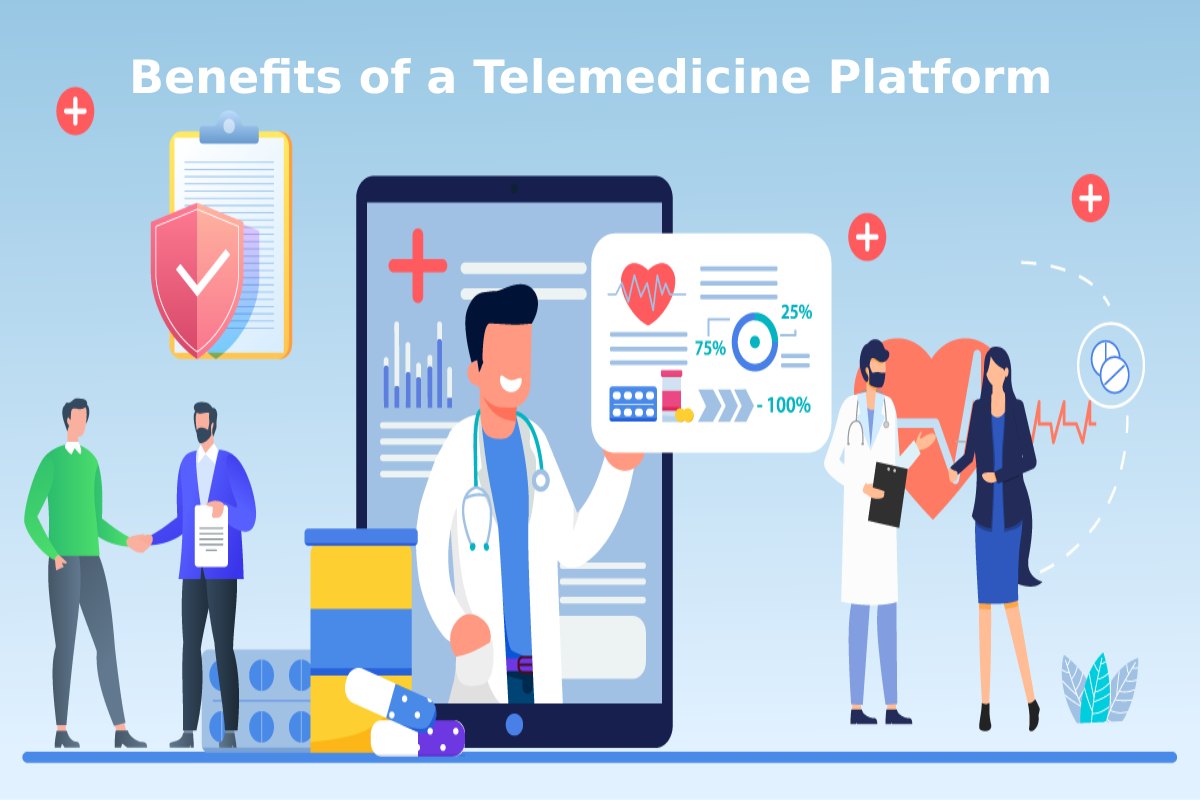Healthcare professionals worldwide are turning to telemedicine as a convenient way to maintain their quality of care during the COVID-19 pandemic. Telemedicine is a growing field with many benefits. Providers can leave the office early and continue seeing patients from the comfort of their homes with minimal equipment. However, many telemedicine practices are now opting for platforms on which to base their virtual practices.
A TM platform is a technology infrastructure and service that allows telemedicine to interact internally and externally with patients and other providers.
Why Do You Need a Telemedicine Platform?
Telemedicine platforms are used to interact with patients and other healthcare providers. They allow safe, private, high-quality, HIPAA-compliant virtual medical consultations via video conferencing. HIPAA-compliant means they must be secure, private, and have high-resolution video and audio of both parties involved. High-speed internet is also another requirement.
The critical elements of a telemedicine platform ensure consistent and quality performance. They allow TM providers to coordinate appointment requests, schedule timings, and fix technical issues. They also help coordinate video communication technology, such as fixed or movable cameras, fixed or portable mics, multiple accessories, screen sharing, and annotation capabilities.
Telemedicine platforms are also constantly evolving to meet practitioners’ requirements, allowing for lesser training times and faster implementation. They will also easily enable a performance overview to measure the quality of care through analytics and metrics, allowing virtual practices to improve their services.
How Telemedicine Platforms can Optimize Your Practice
Telemedicine has increased to historic levels in response to the COVID-19 pandemic. Healthcare providers and physicians increasingly embrace the bigger picture and have combined the various available telemedicine services into a single and complete solution. These telehealth platforms deliver all the advantages of practicing TM within a single, customizable, configurable package.
TM platforms are a cloud-based care delivery solution, making the best possible use of modern consumer and network technology. There are three kinds of telemedicine platforms that clinicians can choose from.
- Software-as-a-Service (SaaS) offers virtual healthcare facilities using a specific piece of TM software.
- Infrastructure-as-a-Service or IaaS offers practitioners the use of hardware and software.
- Platform-as-a-Service offers practitioners the whole package, i.e., software, hardware, internet connectivity tech support, and patient portals.
Benefits of Using a Telemedicine Platform
A telemedicine platform should assist healthcare providers in achieving all of their strategic and performance goals. While a TM platform should enable virtual medical consultations, it should also empower healthcare providers to optimize organizational and medical capabilities.
Telemedicine kits, carts, cameras, EMR integration, and clinicians are vital for your virtual practice but are not all you need. Implementation, scalability, security, and measurable outcomes are also required to migrate to TM successfully. Since telemedicine allows providers to implement, customize and optimize a vast range of telehealth services according to their requirements, it can offer your healthcare practice many advantages:
- Convenience is the most apparent benefit of using a telehealth platform. The types of platforms available vary on convenience, but it comes down to specific scenarios. Many of the most popular TM platforms offer all the services you need for implementation, such as software, hardware, scheduling, engagement tools, tech support, and administration.
- Security is another great benefit of using TM platforms. Since most platforms are cloud-based, they are entirely secure. You can choose a platform that has the best security for your requirements and resources. This allows virtual healthcare facilities to secure their data according to HIPAA guidelines.
Telemedicine platforms are essential in today’s technology-rich healthcare environment. They allow providers to customize and tailor the remote care they offer to their patients’ needs. Telehealth platforms enable telemedicine providers to deliver more care into the home and help balance the technological and service aspects of innovation in medicine.


